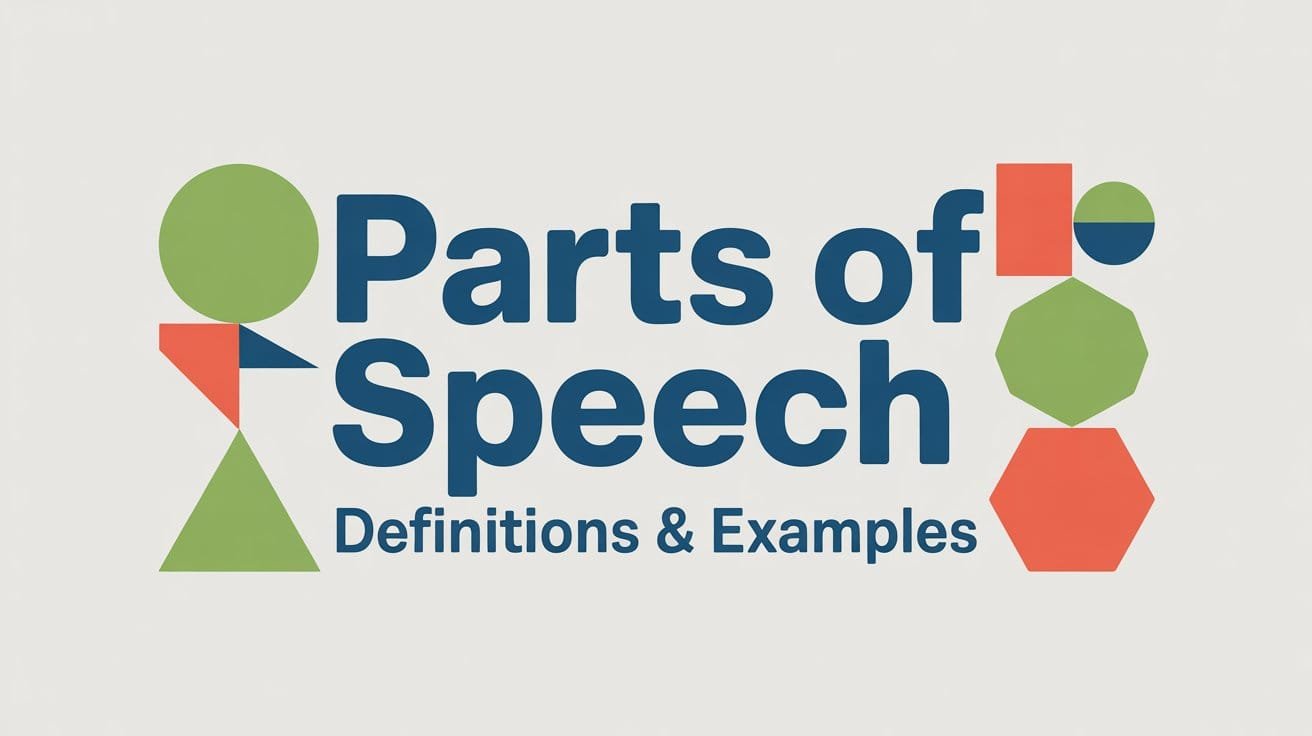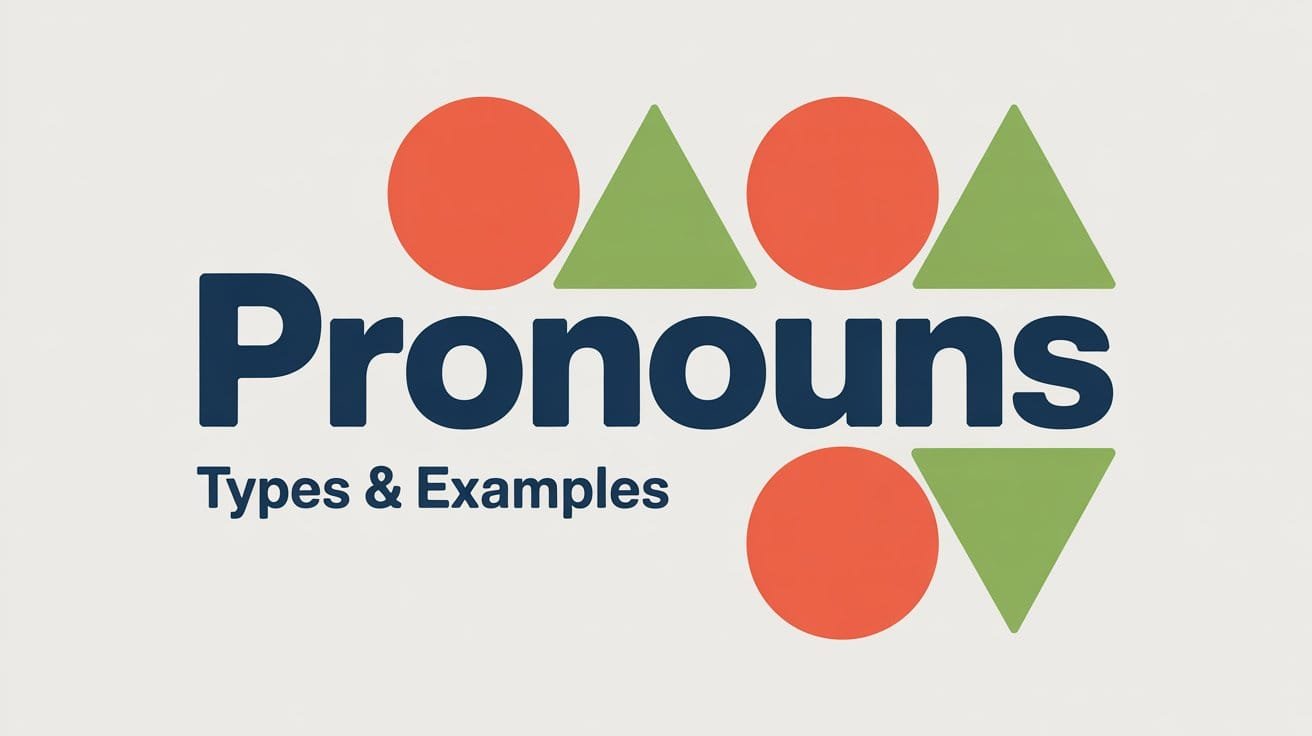Nouns are one of the first things you learn in English, and for good reason. They give names to people, places, things, and ideas. Whether you’re writing a sentence or having a conversation, nouns help you refer to the world around you and express thoughts more clearly.
A noun can be something you can touch, like book or chair, or something you can’t, like friendship or freedom. Some nouns are general, like city or animal, while others are specific, like Paris or Tiger. In this guide, you’ll learn what nouns are, how they work in a sentence, and the different types you’ll come across.
What Is a Noun?
A noun is a word that names a person, place, thing, or idea. Nouns often act as the subject of a sentence, but they can also serve as objects, complements, or objects of a preposition.
In other words, nouns are used when you need to talk about who or what is involved in an action or situation.
Examples
- Person: doctor, teacher, Riya
- Place: library, India, kitchen
- Thing: phone, pencil, rain
- Idea: honesty, happiness, freedom
You can often spot nouns by how they’re used in a sentence. They may come after articles like a, an, or the, or be described by adjectives.
Example sentence:
The child held a red balloon with both hands.
→ Child and balloon are nouns—they name people and things.
Examples of Nouns in Sentences
Nouns appear in almost every sentence you use. They can show up as subjects, objects, or even as part of longer phrases.
Examples
- My brother is reading a book.
- They moved to Canada last year.
- We kept the tools in the garage.
- Her kindness surprised everyone.
- The committee agreed to postpone the meeting.
- He bought a new laptop during the sale.
- She gave me some useful information.
Different Types of Nouns in English
Nouns can be grouped into several types based on what they refer to and how they behave in sentences.
Here are the main types of nouns:
- Common Nouns: Refer to general items (e.g., city, car).
- Proper Nouns: Specific names, always capitalized (e.g., London, Toyota).
- Concrete Nouns: Things perceivable by the senses (e.g., apple, music).
- Abstract Nouns: Intangible concepts (e.g., freedom, love).
- Countable Nouns: Items that can be counted (e.g., book/books).
- Uncountable Nouns: Cannot be counted individually (e.g., water, information).
- Collective Nouns: Groups considered as a whole (e.g., team, family).
- Compound Nouns: Made up of two or more words (e.g., toothpaste, mother-in-law).
Common and Proper Nouns
Common nouns name general, non-specific people, places, things, or ideas. These words are not capitalized unless they start a sentence.
Proper nouns name specific people, places, or things. They are always capitalized, no matter where they appear in a sentence.
Examples
- Common noun: She is reading a book.
- Proper noun: She is reading Harry Potter.
- Common noun: They visited a beautiful city.
- Proper noun: They visited Barcelona.
- Common noun: The teacher arrived early.
- Proper noun: Mr. Thomas arrived early.
Abstract and Concrete Nouns
Concrete nouns are words for things you can see, hear, touch, taste, or smell. They refer to physical objects you can experience with your senses.
Abstract nouns, on the other hand, name things like ideas, emotions, or qualities—things you can’t see or touch.
Examples
- Concrete noun: The flower smelled sweet.
- Abstract noun: Her happiness was obvious.
- Concrete noun: We heard a loud alarm.
- Abstract noun: He showed great patience.
- Concrete noun: The book was on the desk.
- Abstract noun: They value freedom above all.
Countable and Uncountable Nouns
Some nouns name things you can count—like books, apples, or chairs. These are called countable nouns. They have singular and plural forms, and you can use numbers with them directly.
Other nouns refer to things that aren’t counted individually, like water, rice, or advice. These are known as uncountable nouns. They usually don’t have a plural form, and you won’t use numbers directly with them.
Examples
- Countable: I have three notebooks in my bag.
- Uncountable: She gave me useful advice.
- Countable: We saw several cars parked outside.
- Uncountable: Please add some sugar to the tea.
To talk about uncountable nouns in specific amounts, you often need words like some, a little, or measurement phrases like a cup of or a piece of.
Example:
- a piece of information (not an information)
- a glass of water (not a water)
Collective Nouns
A collective noun names a group of people, animals, or things that are seen as one unit. Even though the group is made up of multiple members, the noun itself is treated as singular in many cases.
Examples
- The team is practicing for the final match.
- Our family meets every Sunday.
- A flock of birds flew over the lake.
- The jury has reached a decision.
Collective nouns can be tricky because they take singular or plural verbs depending on the variety of English (British or American) and whether the group is acting as one or individually. But for beginners, it’s helpful to first treat them as singular unless the context clearly shows otherwise.
Compound Nouns
A compound noun is made up of two or more words that come together to name a single person, place, thing, or idea. These words can be written as one word, separate words, or connected with a hyphen.
Common Forms
- One word: toothpaste, haircut, notebook
- Hyphenated: mother-in-law, check-in, runner-up
- Separate words: bus stop, coffee table, swimming pool
Even though they’re made of more than one word, compound nouns function as a single unit in a sentence.
Examples
- He forgot to pack his passport.
- They’re staying at a guest house near the beach.
- Her father-in-law is visiting next week.
Singular and Plural Nouns
Singular nouns refer to just one person, place, thing, or idea.
Plural nouns refer to more than one.
In most cases, plural nouns are formed by adding -s or -es to the end of the word. But some nouns have irregular plural forms that don’t follow standard rules.
Examples
- Singular: There’s a cat on the roof.
Plural: There are two cats on the roof. - Singular: She saw a bus pass by.
Plural: Several buses stopped at the station. - Singular: The child is playing outside.
Plural: The children are playing outside. (irregular form)
Possessive Nouns
A possessive noun shows ownership or a relationship between things. You form it by adding an apostrophe and sometimes an “s” to the noun.
Examples
- That is Maya’s notebook.
- The dog’s tail is wagging.
- We visited our friends’ house last weekend.
(plural noun ending in “s”)
For singular nouns, add ’s: the girl’s shoes
For plural nouns that already end in s, just add an apostrophe: the teachers’ lounge
How to Identify a Noun in a Sentence
Identifying nouns is easier when you focus on what the word is doing in the sentence. Most nouns name a person, place, thing, or idea, and often work as the subject or object.
Here are a few tips to help you spot nouns quickly:
Look for words that name something
If a word answers “Who?” or “What?”, it’s likely a noun.
Example: The cat slept on the sofa.
Check if it follows an article or determiner
Nouns often come after a, an, the, some, or this.
Example: She opened the window.
See if it can be made plural or possessive
Most countable nouns have a plural form or can show possession.
Example: Three books were on the desk.
The book’s cover was torn.
Look at its position in the sentence
Nouns are often found at the beginning (as subjects), after verbs (as objects), or after prepositions.
Example: He put the keys in the drawer.
Nouns vs. Pronouns: What’s the Difference?
Nouns and pronouns are both parts of speech. A noun names a person, place, thing, or idea, while a pronoun takes the place of a noun. When a noun has already been mentioned, repeating it can make the sentence sound awkward. That’s where pronouns help—they keep sentences clear, natural, and less repetitive.
For example, instead of saying, “Maria forgot Maria’s phone, so Maria went back to get it,” we use pronouns to make the sentence clearer: “Maria forgot her phone, so she went back to get it.” In this case, Maria is the noun, and her and she are pronouns replacing that noun to keep the sentence natural and easy to follow.
FAQs About Nouns in English
What are 5 examples of nouns?
Here are five common nouns: teacher, book, city, music, and honesty. These include people, things, places, and even ideas.
Is “love” a noun or a verb?
It can be both. Love is a noun when referring to the feeling (“Love is important”), and a verb when referring to the action (“I love this song”).
Can a word be both a noun and a verb?
Yes. Many English words change roles depending on how they’re used. For example, “run” is a verb in “They run every morning” and a noun in “She went for a run.”



